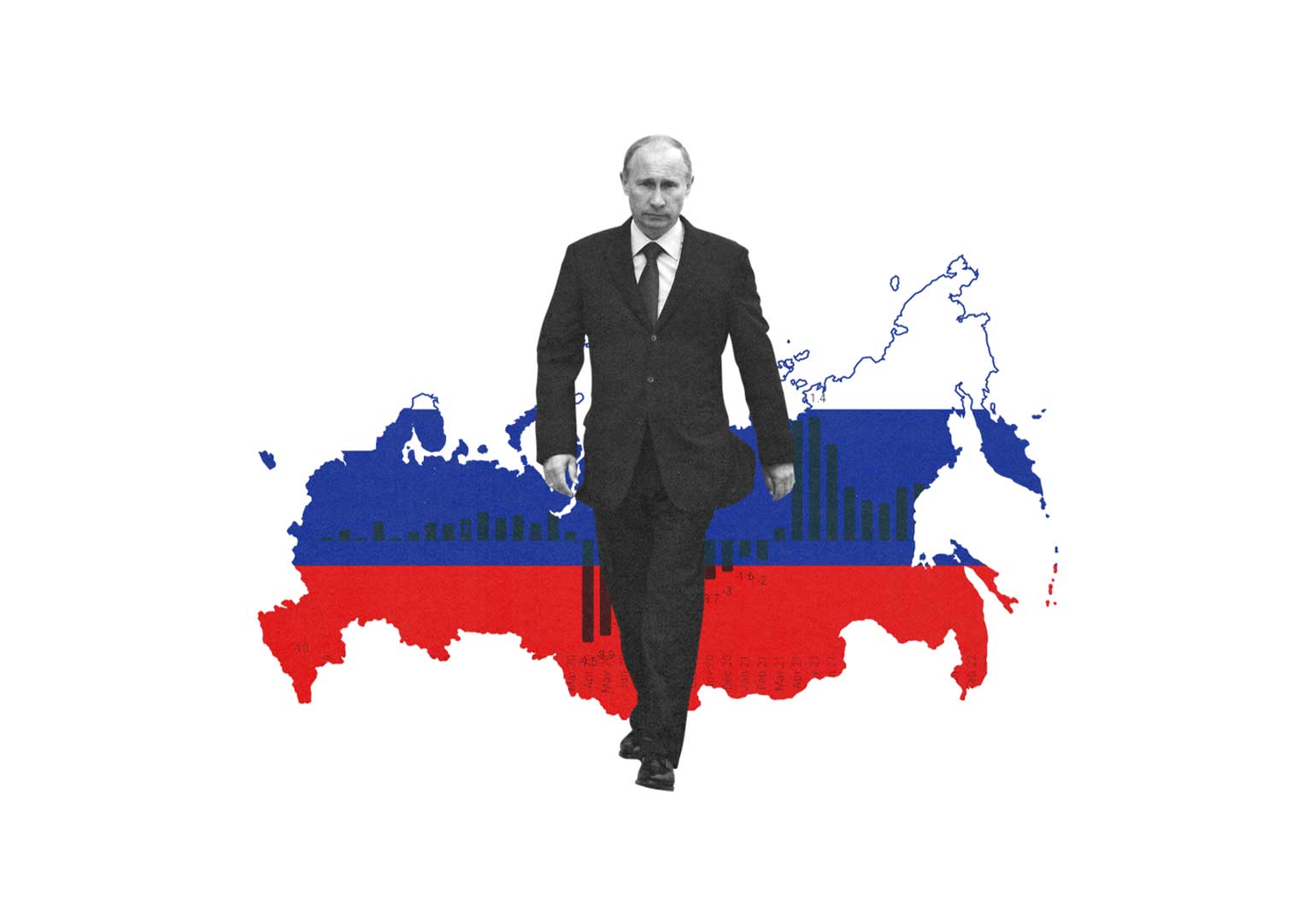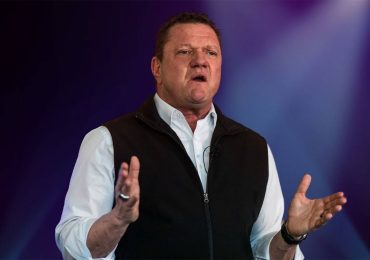Two years have passed since Russia launched the full-scale invasion of Ukraine. Few could have imagined the reality facing our region and the world today. Expectations of a quick Ukrainian defeat failed to materialize, as did the forecasts of Russian economic collapse.
Russia is practically cut off from the global financial system, and $300 billion of its reserves are frozen. Russian airspace is closed to Western airlines, while Western ports are closed to the Russian navy. A price ceiling of $60 has been imposed on the sale of Russian oil. In theory, selling any military equipment to Russia is also forbidden.
The Russian economy has not crashed; nevertheless, the current situation differs considerably from the pre-war period.
The limited political effect of Western sanctions was already known to us from the examples of Iran and North Korea, but Russia also demonstrated the economic limits of sanctions. The broader the scope of sanctions, the harder they are to enforce. With the help of developing countries, Russia has so far been able to import the products it needs. At the same time, high global demand for oil has ensured that the price of Urals – Russia’s leading export brand – has remained above $60 per barrel for more than a year.
The sanctioned Russian economy grew by 3.5% last year, exceeding the growth rate of the USA and Western European economies, as well as the global average growth rate. Russia registered double-digit growth in manufacturing and wages while unemployment fell to a historic low.
At first glance, any country would be envious of these figures. However, as paradoxical as it may sound, the figures point towards a hidden economic malaise. Russia is running the risk of overheating its economy by hedging its bets on a long war of attrition against Ukraine. While it is true that the Russian economy has shown resilience in the face of sanctions, today’s success comes at the expense of future difficulties.
RUSSIAN MILITARY KEYNESIANISM
While classical Keynesianism envisions the creation of fiscal stimulus and increased government spending on social and infrastructure projects, military Keynesianism, where the military-industrial complex is the primary beneficiary, involves increased spending accompanied by a rise in the influence and power of the military. This economic model relies on the continuous escalation of war costs. Nazi Germany is a notable historical example, and over the past two years, we have observed a similar trend in Russia during the war against Ukraine. The conflict holds existential importance for the Kremlin both politically and economically, shaping Russia’s new economic order. In 2024, Russia is prioritizing the continuation of the war, leading to increased funding for its armed forces and security agencies.
This year, Russia spent 6% of its GDP on defense (i.e., the war) and a further 8% on other security and law enforcement institutions. This figure significantly exceeds American defense spending during the conflicts in Afghanistan and Iraq (3.8% of GDP). For the first time since the fall of the Soviet Union, Russia’s military expenditure has exceeded social expenditure (5%).
This spending accounts for one-third of Russia’s economic growth. Military manufacturing figures are growing by double digits, closely followed by the civilian sectors that manufacture defense-related goods such as military footwear and medicine. The war has altered Russia’s economic structure.
According to POCCTAT, the military-industrial complex is operating at 81% of its capacity. Factories are operating in three shifts, meaning there are no more reserves for increasing supply, while any further increase in demand will also lead to a proportional price increase.
Military manufacturing is depriving civilian sectors of funding and a workforce, as shown by the abnormally low unemployment figure of 2.9%. In short, the Russian economy is lacking a labor force. Mobilization, the recruitment of volunteers, and increased employment in military production removed 850,000 people from other sectors of the economy. The civil sector is experiencing a shortage of qualified personnel and blue-collar workers. In this context, employers are forced to retain or recruit personnel by increasing wages, which will lead to the overheating of the economy.
Since coming to power, Putin has continuously promised economic diversification. On the 24th anniversary of his rule, we can finally say that this promise has been fulfilled: in addition to oil, the Russian economy is now also dependent on war.
Increased military costs are also filling the pockets of the population, as evidenced by the geography of salary increases. Regions with large military manufacturing industries, such as Tula, Novosibirsk, Samara, and Sverdlovsk Oblasts, have experienced revenue increases above the national average. Financial compensation paid to the families of personnel killed and wounded in the war is also helping to reduce poverty levels. Casualty figures are substantially heavier in ethnically nonRussian regions. People’s revenues and savings are growing in Chechnya, Buryatia, Tuva, Dagestan, and Altay.
“I repeat, the true elites are the people who serve Russia – the workers and the fighters, experienced and resolute people who are proving their loyalty to Russia through their actions,” Vladimir Putin told the Federal Council on 29 February. This is not the first time that Putin has talked about new elites and the need to promote the heroes of the so-called special military operation. However, war is changing the structure of the Russian middle class, not just the elites.
Before the war, the middle class comprised businesspeople, IT specialists, and service sector employees. Today, the middle class has a growing share of military and security personnel. This limits the Kremlin’s room to maneuver, and the government is forced to maintain generous salaries and social programs for the security forces and the military. Any worsening of the social situation for these groups may have undesirable consequences for the regime.
If Russia were a stable country, it would be able to finance the war and generous social programs on a macro level for a lengthy period of time. However, a two-digit base monetary rate is precisely what points towards macroeconomic instability. The Russian state is slowly undermining its stability by stimulating domestic demand through defense spending and subsidized retail and corporate loans.
Putin believes that financial mismanagement led to the downfall of the Soviet Union. Technocrats have run the Russian economy for many years. The Central Bank has so far retained its autonomy, and Putin still listens to the advice of technocrats, but war has its own logic. Important macroeconomic institutions such as budgetary rule, the free movement of capital, and, in part, the independence of the Central Bank have already been brought under the heel of the military.
Another indicator of instability is the ruble’s exchange rate, which ranged between 50 and 100 against the U.S. dollar last year. After the abolition of budgetary rule, the exchange rate became wholly dependent on the country’s balance of trade. Thus, while revenues from oil sales reached the upper limit and imports continued to grow, the ruble depreciated sharply.
Based on recent data, inflation is rising due to war-related imbalances, currently standing at 7.5%. High inflation and the ruble’s devaluation are negatively affecting the population’s mood, prompting them to exchange their savings for foreign currency and move as much capital out of the country as possible. The Kremlin cannot neutralize the leading cause of the ruble’s depreciation (import costs), so it employs mechanisms such as currency restrictions and the regulation of prices of individual products under the threat of high penalties.
Low external debt, as well as gold and yuan reserves, can buy Russia considerable time, but the upcoming presidential election and the ongoing war make new, large-scale, and short-term solutions necessary. It is in this context that we must view Putin’s speech before the Federal Council, in which the president made pledges worth $54 billion.
At first glance, the sanctions have effectively protected the Russian economy from external shocks. However, this does not apply to oil prices. According to the budget plan, the price of Russian oil must be at least $70 this year. Any drop in oil prices will hurt Russia. As a rule, economic overheating is always followed by an economic downturn. Such a downturn is especially painful when independent financial institutions cannot perform their functions.
Russia cannot win the war. It does not have the luxury of ending it either.
Editor-in-chief of RealPolitika.

















